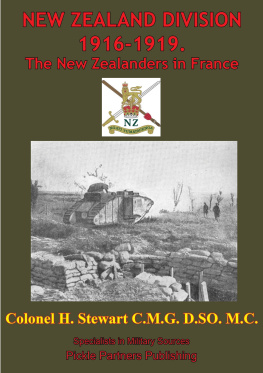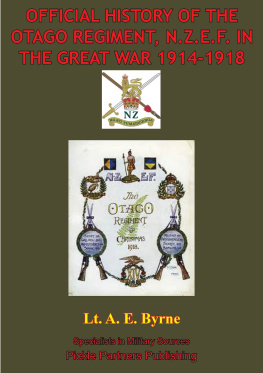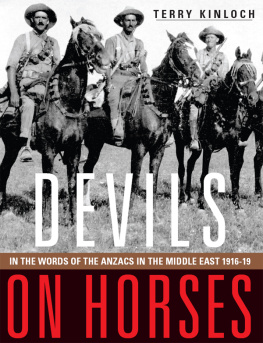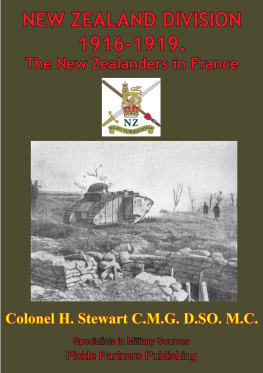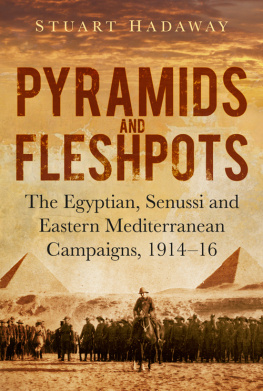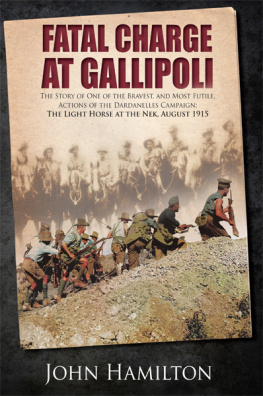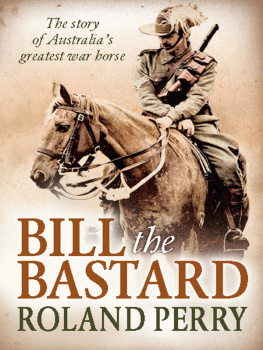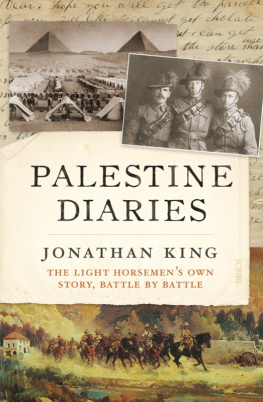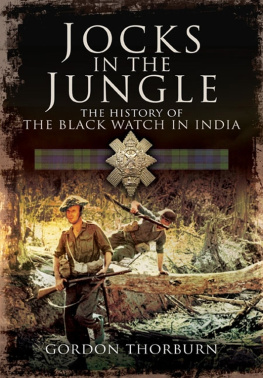

This edition is published by PICKLE PARTNERS PUBLISHING www.picklepartnerspublishing.com
To join our mailing list for new titles or for issues with our books
Or on Facebook
Text originally published in 1921 under the same title.
Pickle Partners Publishing 2013, all rights reserved. No part of this publication may be reproduced, stored in a retrieval system or transmitted by any means, electrical, mechanical or otherwise without the written permission of the copyright holder.
Publishers Note
Although in most cases we have retained the Authors original spelling and grammar to authentically reproduce the work of the Author and the original intent of such material, some additional notes and clarifications have been added for the modern readers benefit.
We have also made every effort to include all maps and illustrations of the original edition the limitations of formatting do not allow of including larger maps, we will upload as many of these maps as possible.
The New Zealanders in Sinai and Palestine
By Lieutenant-Colonel Guy Powles
compiled by Major A Wilkie.
TABLE OF CONTENTS
Contents
Introduction by General Sir Archibald Murray, G.C.M.G., K.C.B., C.V.O., D.S.O.
I have been greatly honoured by being asked to write a few words of introduction to the history of the New Zealand Mounted Brigade.
The Brigade served under my command in the Sinai Peninsula during the whole of 1916 and until the end of June, 1917. Fortunate indeed is a commander in the field who has at his disposal New Zealand mounted troops, for he can depend on them at all times to display energy, resource, and endurance. All these three qualities were time after time exemplified by the New Zealanders in the waterless desert country of Sinai.
I have known the Canterbury Mounted Rifles cover forty miles of heavy desert sand in thirty hours.
On May 31st, 1916, the New Zealand Mounted Brigade was in action at Bir Salmana, covering sixty miles in thirty six hours.
Not only is the Brigade equal to any troops in energy, resource and endurance, hut in addition it is second to none in determination and dash. The fine determined action of these troops at Mount Royston, Romani, and their magnificent dash at Magdhaba and Rafa will always be remembered by the Egyptian Field Force to their everlasting credit.
I have had New Zealand troops under my command in other lands than Egypt and have gained a lasting and sincere affection for them, collectively and individually. They are a magnificent lot of men, who play the game at all times.
I feel sure that this History will bring home to all New Zealanders and the Empire generally the grand part played in the Great War by their mounted troops. It will also be cherished as a priceless memento by those who have lost near and dear relatives who gave up their lives for their King and country and now lie buried in a far distant land.
The Empire is proud of the New Zealand Mounted Brigade and I personally owe it a debt of lasting gratitude.
Archibald Murray
General
Went House.
West Malling, Kent.
Introduction by Field Marshal Sir Edmund H. H. Allenby, G.C.B., G.C.M.G.
The New Zealand troops who served in Palestine formed part of the Australian and New Zealand Mounted Division, which was composed of Australian and New Zealand Brigades that had fought in Gallipoli.
The Division had its full share of fighting in the conquest of the Sinai Peninsula, and in the first and second battles of Gaza in March and April, 1917.
When 1 assumed command of the Egyptian Expeditionary Force, in June, 1917, the New Zealanders were already veteran troops proved in many a battle. Two more years of hardship and danger were to pass before they saw the end of their labours. Two years of unceasing toil, crowned with much glory.
The summer of 1917 was spent in preparing for the campaign.
On the evening of October 30th the troops destined for the attack on Beersheba moved from their rendezvous. On the evening of the 31st Beersheba fell.
In this action the New Zealanders took a prominent part; and, thenceforward until the 7th November, they were continually engaged in hitter fighting north of Beersheba. Afterwards, moving to the coastal plain, they joined in the advance through Philistia.
At Richon le Zion, on the 14th November, they defeated a determined and heavy Turkish counter-attack by a brilliant bayonet charge. From November 16th to 25th, in the neighbourhood of Jaffa; and in December, on the river Auja, great deeds of valour were done by the New Zealanders.
In February, 1918, the Jordan Valley became the scene of their activities.
From March 23rd to 31st they fought the Turks and the weather in the daring raid to Amman. Again, they cooperated in the raid to Es Salt, from April 30th to May 4th; and they shared the victory over the Turks and Germans on. July 4th.
When the autumn campaign was in progress, the New Zealanders took a leading part in defeating the Turkish IV. Army. In the Jordan Valley, and thence eastward, over their old battlefields of Shunet Nimrin, Es Salt and Amman, to the Hedjaz railway, the men of New Zealand fought and marched to final and complete victory. Nothing daunted these intrepid fighters; to them nothing was impossible.
I am proud to have had the honour of commanding them; and they have my congratulations, my thanks and my good wishes.
Edmond Allenby
Field Marshall.
The Residency,
Cairo, 30/8/19.
Introduction by Lieutenant -General Sir H. Chauvel, K.C.B., K.C.M.G.
It was my good fortune, as well as an honour which I appreciate very highly, to have the New Zealand Mounted Rifles Brigade included in my command during the operations in Sinai and Palestine.
I had previously had considerable experience of the horsemen of New Zealand in the South African War and on the Gallipoli Peninsula (as infantrymen) and knew their sterling qualities and w-hat might be expected of them; but when the Anzac Mounted Division was formed early in 1916, the most confirmed optimist could never have conceived the opportunities which would come in their way; opportunities which, with their Australian brothers, they grasped with both hands.
In the early part of the Great War the day of the mounted man appeared to be gone forever, and it remained for the Australian Light Horse and New Zealand Mounted Rifles to demonstrate to the world that the horse soldier was as essential in modern warfare as he had ever been in the past. It was the splendid work of these Australians and New Zealanders in the Sinai Peninsula which, in the first place, turned a defensive campaign into an offensive one and, in the second place, led to the enormous increase in the cavalry in the Egyptian theatre of the War. Without large forces of cavalry, the final operations, which destroyed three Turkish armies and forced Germanys allies out of the War, could never have been undertaken.
From the Battle of Romani to the Armistice with Turkey the New Zealand Mounted Rifles Brigade took a prominent part in all the operations, under the brilliant leadership of Major-General Sir Edward Chaytor and Brigadier-General W. Meldrum, and I am personally much indebted to these officers and all ranks of the Brigade for much of the successes achieved, first of all by the Anzac Mounted Division and later by the Desert Mounted Corps.
The achievements of the mounted men of New Zealand form a record of which their country and the Empire have every reason to be proud.
Next page
![Lt Col C. G. Powles THE NEW ZEALANDERS IN SINAI AND PALESTINE [Illustrated Edition]](/uploads/posts/book/399129/thumbs/lt-col-c-g-powles-the-new-zealanders-in-sinai.jpg)

